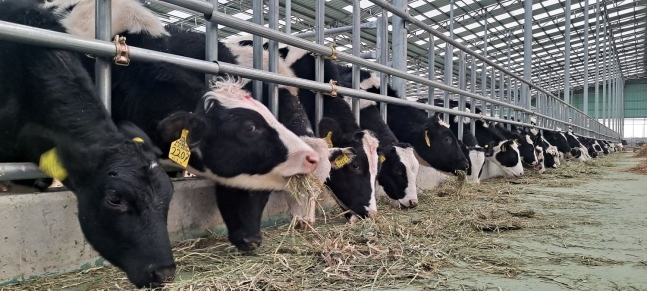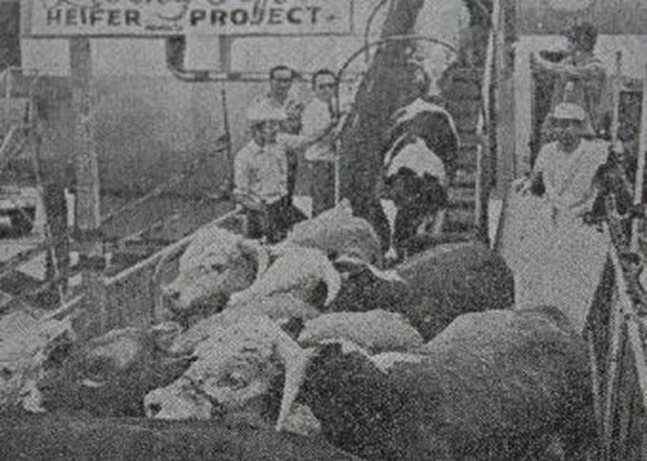 |
Milk cows await their flight to Nepal at a local farm in Korea. (Heifer Korea) |
A hundred and one Korean dairy cows will fly to Nepal over the next month, as part of a plan to help boost the productivity of the South Asian country's dairy industry by sharing the cow's genetic resources.
Led by Heifer Korea and the South Korean government, the project marks the first time live Korean cows are being sent overseas.
Nepal has some 7.5 million dairy cows, about 20 times the number of Korea, and the dairy industry accounts for 9 percent of Nepal's gross domestic product, but the country's annual milk production is only about a third of Korea's, according to the Ministry of Agriculture.
Korea has among the highest milk productivity anywhere, trailing Israel, the US, Canada and Spain.
A Korean cow produced a daily average of about 9 liters of milk in the 1960s and 1970s, similar to Nepal's current level, but thanks to 50 years of efforts by dairy farms and the government, a typical cow here now produces about 34 liters per day.
 |
Cows and cattle land in South Korea some 70 years ago from a US charter flight. (Heifer Korea) |
Of the 101 cows bound for Nepal, the first batch of 42 departed on an Asiana Airlines flight early Thursday, according to US-based nonprofit organization Heifer International’s Korean arm on Wednesday.
The monthlong plan involves sending the livestock via four flights with Asiana and Korean Airlines to the Himalayan state by the end of January next year.
During the flight, the cows will receive special care from veterinarians, with the interior temperature and humidity adjusted to preserve the cows’ body heat.
Two Korean Hanwoo bulls and the semen of the bulls will also be sent for breeding purposes as well.
Through the latest project, Heifer Korea said it seeks to build a sustainable agriculture model in Nepal. The project is based on Heifer International’s core “Passing on the Gift” model, in which the first recipients of the cows pass on the first offspring and the knowledge of livestock management to their neighbors. The goal of the model is to build a sustainable community that can live off a new solid agriculture and business model.
The 101 milk cows -- all born and bred in Korea -- will be first handed over to 50 households, and Heifer Korea seeks for the project to bear fruit to eventually benefit more than 300 households.
This year’s project completes the virtuous cycle of giving first established here by Heifer International 70 years ago. Over a period of about 25 years, the organization sent 897 milk cows among 3,200 livestock and 1.5 million bees to South Korea, as the country was recovering from the ashes of the 1950-1953 Korean War.
“It is time to return the generous favor that we received during the war,” Heifer Korea CEO Lee Hae-won said in a statement.
“I’d like to thank the Ministry of Agriculture, Food and Rural Affairs, farmers who donated their cows that they fostered with love and donors who made all of this possible. This will become an opportunity that will bring about a systematic change to the agriculture and farming in Nepal.”
Nepal’s gross domestic product per capita came to $1,223 as of last year.
By Jung Min-kyung (
mkjung@heraldcorp.com)







![[Herald Interview] 'Trump will use tariffs as first line of defense for American manufacturing'](http://res.heraldm.com/phpwas/restmb_idxmake.php?idx=644&simg=/content/image/2024/11/26/20241126050017_0.jpg)
![[Health and care] Getting cancer young: Why cancer isn’t just an older person’s battle](http://res.heraldm.com/phpwas/restmb_idxmake.php?idx=644&simg=/content/image/2024/11/26/20241126050043_0.jpg)
